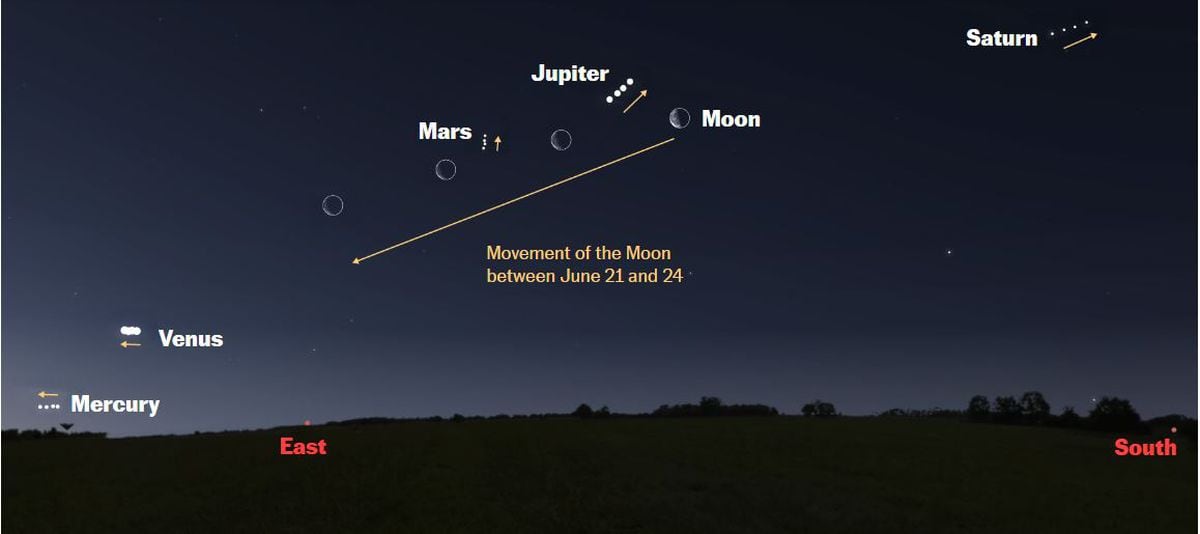A rare planet parade is offering skywatchers the chance to see the five major planets in alignment: Mercury, Venus, Mars, Jupiter and Saturn.
The best time for viewing will be just before sunrise on Friday, June 24, when the Moon will join the lineup, appearing between Venus and Mars.
This is the first time this alignment has happened since December 2004, although on that occasion, the planets were further apart from one another, says Mario Tafalla, a member of Spain's National Astronomy Observatory.
Although this event typically happens every 57 years, NASA expects the next alignment to take place in September 2040.
“What is curious about it is that if you look from east to west, they are aligned in the same order as they are in distance from the Sun: Mercury, Venus, Mars, Jupiter and finally Saturn,” says Tafalla.
The five planets can easily be spotted with the naked eye.
The ideal place to see the alignment is in a spot where there is an unhindered view of the horizon, with no trees or buildings.
It's also important to find a position with little light pollution.
According to Tafalla, the most difficult planet to spot is Mercury, as it is very close to the Sun, while Venus is the brightest.
Javier Armentia, an astrophysicist and director of the Pamplona Planetarium in Spain, says there is an easy way to identify the planets and not mix them up with stars – the planets are brighter and do not twinkle, as stars appear to do.
This is because the light from a star passes through different layers of a turbulent atmosphere.
“We also see the planets as dots, but they are larger and the flicker much less, they have a more stable brightness,” says Javier.
The word “planet” has come to mean wandering star, says Armentia.
The alignment of planets used to be of great importance, especially in Roman times and in ancient Greece, since the planets were believed to be messengers or harbingers of things to come, he explains.
In ancient times, it was believed that studying the stars and the planets could provide clues about what was going to happen on Earth.
While culturally these beliefs have faded, planetary alignments remain of great interest to astronomy, says Armentia.
Both scientists agree that while this may not be a major event, it is a good opportunity to bring astronomy closer to the people as they can see it with their naked eye.
“I'm a professional because one day I became interested in looking up at the sky,” says Tafalla.
“I think this can happen to all of us.”

